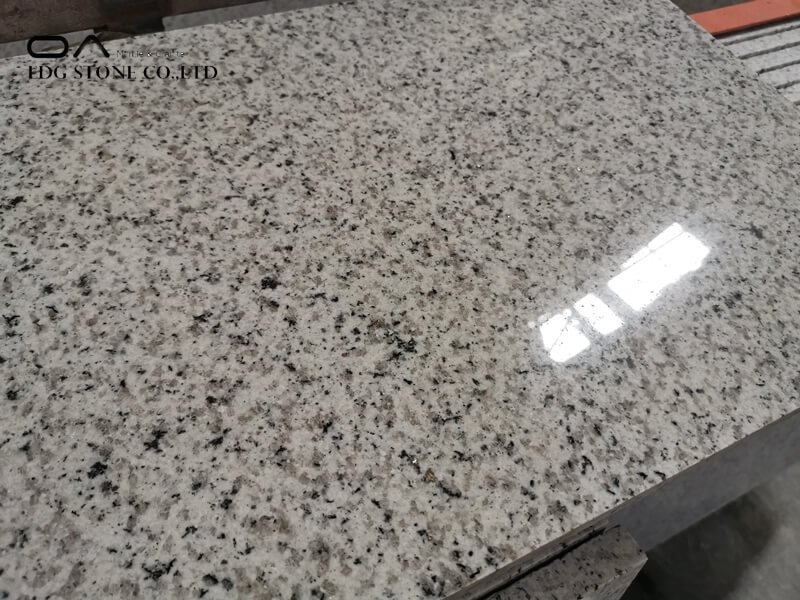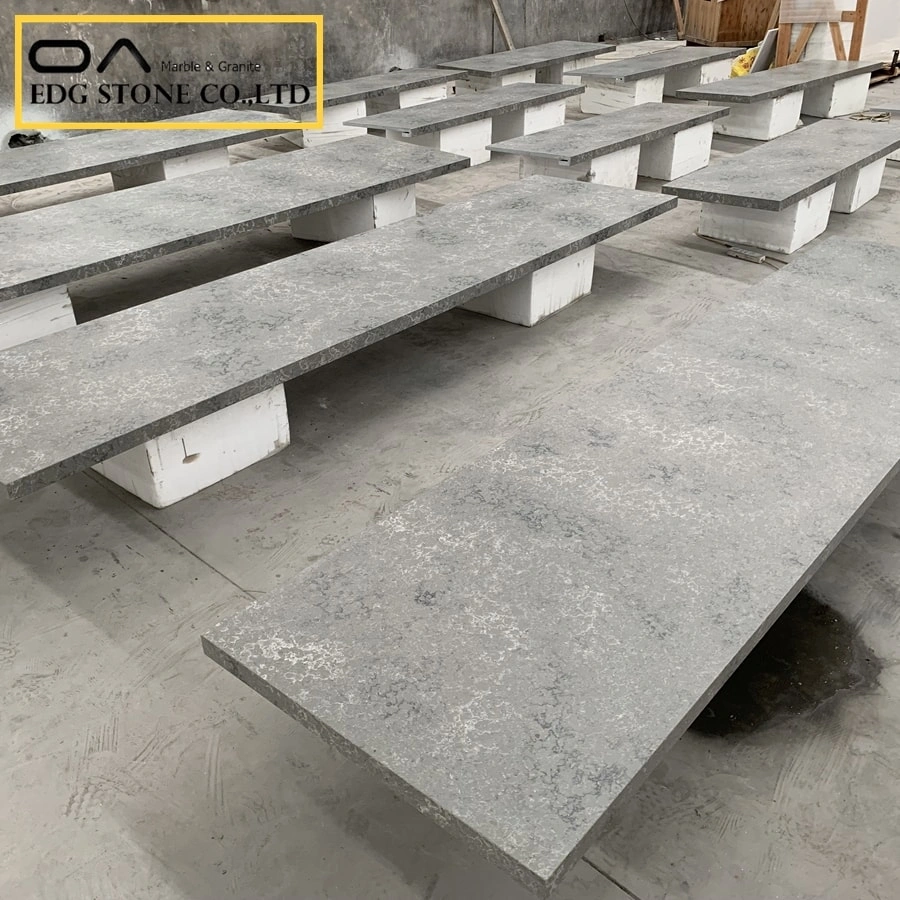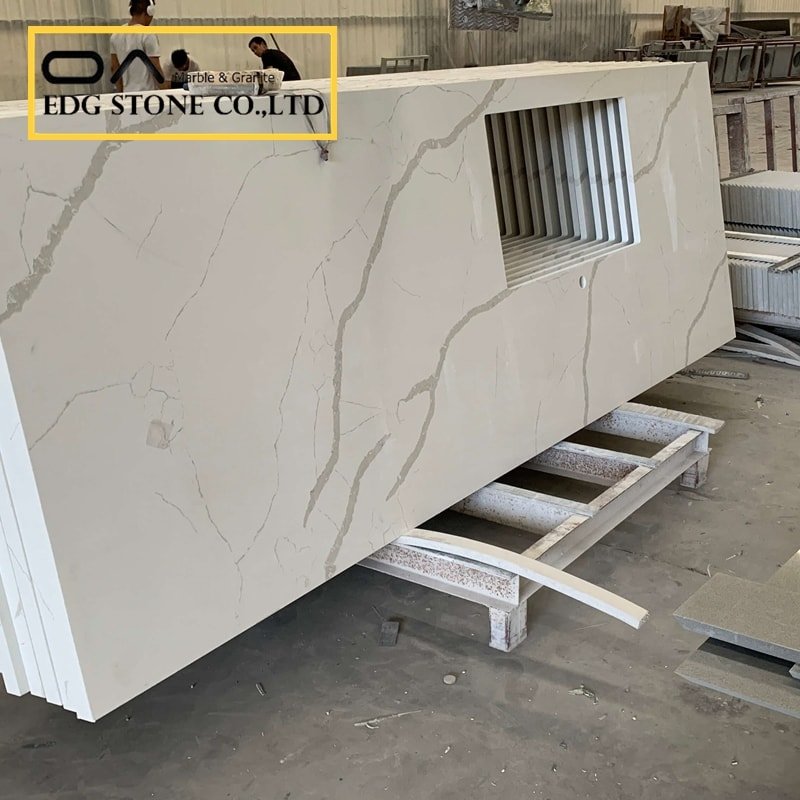Granite countertops are one of the easiest to care for. Follow the care suggestions below, and your granite countertops will remain as bright as new for a long time.
1. Use a soft cloth when cleaning the countertop. The cleaning agent is preferably neutral and non-abrasive. It is best to use mild dishwashing liquid and water.
2. Some household cleaners can be used to clean the countertops but will leave marks. It is okay to use these products occasionally. Remember, the more irritating the product, the easier it is to destroy the curing agent on the countertop. Warm water and sponges are the best cleaning products.
3. The vinegar mixed with water to make a solution can well remove stains, oil stains, etc.
4. Avoid touching marble, limestone, or pure black granite with products containing citric acid, vinegar, or other acids. Because the countertop is easily corroded by acid.
5. Occasionally using furniture polishing materials can prevent fingerprints from splattering the granite and make the countertop look more beautiful.
6. Neither high temperature nor low temperature will damage the granite. High-temperature tableware can be placed directly on the granite countertop.
7. If there are gaps on the table, it is best to avoid putting high-temperature items in the gaps. The epoxy resin in the gap will melt if exposed to a high temperature for a long time.
8. Cutting things directly on the countertop will not damage the granite, but it is best not to do so. Because your knives will quickly become dull.
Curing agent
1. The granite countertop looks like a sealed one after installation. This helps prevent mixtures that will contaminate the countertop from penetrating into the countertop, but it is not strong.
2. The sealing mainly depends on the type of granite and the frequency of use of the countertop. It needs to be resealed within 1-4 years.
3. To test whether the curing agent is effective, drip some water on the countertop. If the water penetrates quickly, it means that it needs to be resealed. Conversely, if the water condenses into droplets, it means that resealing is not necessary.
4. You can buy curing agents at home improvement stores or more professional stores. There is no need to reseal the entire countertop.
Stains, lime, food residue
1. There is no perfect curing agent. The best way to avoid staining is to clean up the spills in time.
2. Dyeing is relatively uncommon, and the most common cause of dying is cooking.
3. Do not put the cooking oil bottle directly on the granite countertop. Do not put rusty bottles and jars on the countertop. Rust will cause the granite to not stain.
4. Put a tray under the glassware, especially those glass bottles containing alcohol or citrus juice.
5. If the granite becomes dim due to humidity, don’t worry. When the water evaporates, it will return to its original color. But this sign indicates that the countertop needs to be resealed.
6. If lime accumulates around the faucet, do not use lime products. Gently scraping off the lime with a razor is the best solution.
7. Use the flat side of a razor to remove the sticky tape, residue, dry paint, glue, and food residue.
8. If staining occurs, it can be removed according to the following steps: mix swimming pool filter powder and 10% hydrogen peroxide to make a plaster. Apply the plaster evenly to the stained area. Cover the plaster with a transparent plastic packaging bag and tie the corners. Let stand overnight. If only some stains are removed, the process can be repeated. For more stubborn stains, you can also use this method, but use acetone instead of filter powder.
Scratches, chips, repairs
1. Granite ranks seventh in the Mohs hardness table, mainly composed of quartz and feldspar, and is actually indestructible. The so-called Mohs hardness scale is based on ten common minerals as a standard and uses mutual scratching to distinguish between hard and soft. It is customary to use Mohs hardness in mineralogy or gemology.
2. It will be scratched by quartz or something harder.
3. It is wise to remove diamond jewelry. Diamonds will scratch the granite.
4. Some porcelain tableware contains coarse quartz sand, which may scratch the countertop.
5. Put a tripod or mat under the utensils that will scratch the table.
6. If you use a marble cutting board, make sure that the rubber or plastic bottom is still safe.
7. It is not common to have fragments in granite. In this case, something is likely to hit the edge of the countertop.
8. If you find fragments, save them.
9. Granite is repairable. In many cases, the fragments can be glued back into place.
10. Small pieces can be glued with superglue, and then use a razor blade to shave off the excess dry glue.







